Last updated on June 9th, 2023 at 08:01 am
The lush greenery of a garden is undoubtedly a fantastic sight, but for those who are looking for an extra touch of charm and distinction, adding perennials with purple leaves can truly elevate the aesthetic appeal.
On top of their unique visuals, purple foliage perennials also offer the extra benefit of being mostly low-maintenance, making them great for gardeners at any level. Now let’s take a look at our favorite purple-leafed perennials that would thrive beautifully in your garden.
Table of Contents
Sun-loving Purple Leaf Perennial Plants
Joseph’s Coat (Alternanthera dentata)
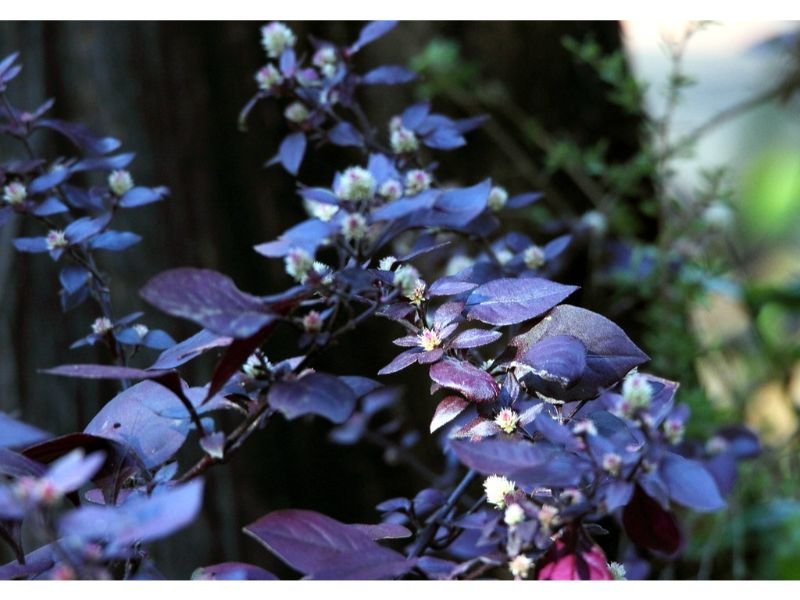
Hardiness Zones: 10 to 11
Approximate Size: 10 to 30 inches (25 to 76 centimeters) tall
If you live in a warmer area, Joseph’s coat can be a great addition to your landscape. This perennial with purple leaves stays relatively compact, and wouldn’t mind thriving in small areas such as containers and pots. Keep their soil moist and well-drained and they will be happy plants!
Purple Mexican Rosettes (Echeveria ‘Purple Pearl’)

Hardiness Zones: 9 to 12
Approximate Size: 12 inches (30 centimeters) tall
If you’re searching for some succulents to complete your collection, the purple Mexican rosettes are here for you! This purple-leaf perennial has fleshy and thick foliage that is not only in purple, but also available in a broad range of colors such as green, pink, and silverish-green. This plant is slow-growing, so you need to take extra patience when thriving them.
‘Purple Palace’ Coral Bells (Heuchera ‘Purple Palace’)
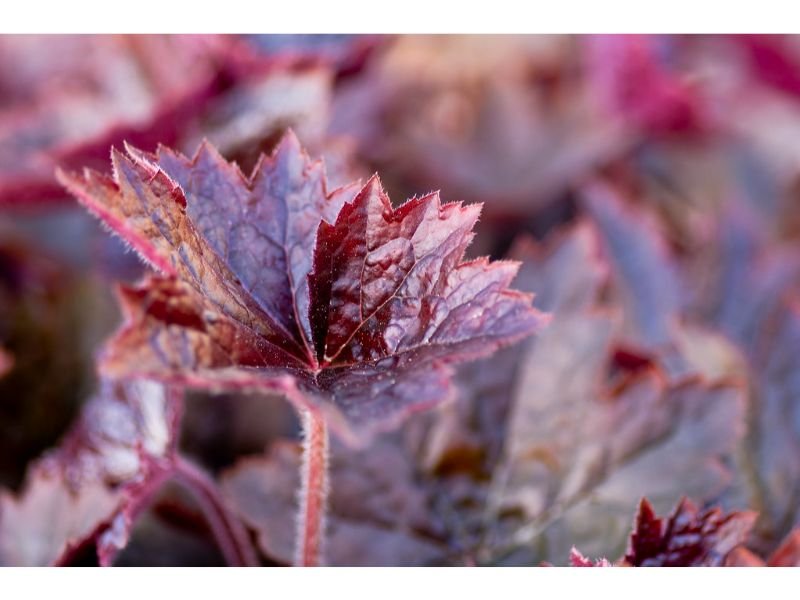
Hardiness Zones: 4 to 9
Approximate Size: 8 to 12 inches (20 to 30 centimeters) tall
With ‘purple palace’ coral bells, you don’t have to worry about winter and dormancy, as this perennial with purple leaves is evergreen. Plus value, ‘purple palace’ coral bells are not just about the look, this plant is also beneficial to relieve pain and as an anti-inflammatory. But as a general rule of thumb, always seek professional advice before consuming any plant as a medication.
Cranberry Hibiscus (Hibiscus acetosella)

Hardiness Zones: 9 to 11
Approximate Size: 36 to 72 inches (90 to 182 centimeters) tall
A bees-favorite, the cranberry hibiscus is a part of the Mallow Family that is favored for its purplish-burgundy leaves and dark burgundy stems. They thrive in both full sun and areas with partial shade and love moist soil with proper drainage. This plant is relatively easy to maintain and can be grown as a small to a medium-sized bush.
Fringe Flower (Loropetalum chinense)

Hardiness Zones: 7 to 9
Approximate Size: 12 to 180 inches (30 to 450 centimeters) tall
This gorgeous plant is a perfect fit for those who love bushy, evergreen plants. Fringe flowers produce clusters of tiny, cup-shaped blossoms that have a good fragrance. They will show their blossoms during spring and are moderately medium to fast to grow. If you often forget about the watering schedule, the fringe flower is more forgiving than any other plant since this plant is somewhat tolerant to drought once they mature.
Wood Sorrel (Oxalis triangularis)

Hardiness Zones: 8 to 11
Approximate Size: 6 to 12 inches (15 to 30 centimeters) tall
As the name indicates, this perennial with purple leaves has triangular-shaped foliage that most likely will close at night! They can thrive both under direct sun and partial shade, although to keep the true purple color they need to be placed more under light shade. In contrast to their deep dark purple foliage, this flowering plant produces small, 5-petaled blossoms in bright lavender or white color.
Perennials with Purple Leaves for Shady Areas
Purple Calathea (Calathea picturata)

Hardiness Zones: 11 to 12
Approximate Size: 14 to 18 inches (35 to 45 centimeters) tall
Purple calathea is the ultimate ornamental plant that needs regular maintenance similar to aroids. A slow-growing and seldom-seen flowering, purple calathea requires constant warmth and humidity to grow best. This plant also prefers to be in areas where bright but indirect light is met. Regular misting is needed to add an extra layer of moisture and to keep pests away.
Purple Heart (Tradescantia pallida ‘Purple Heart’)
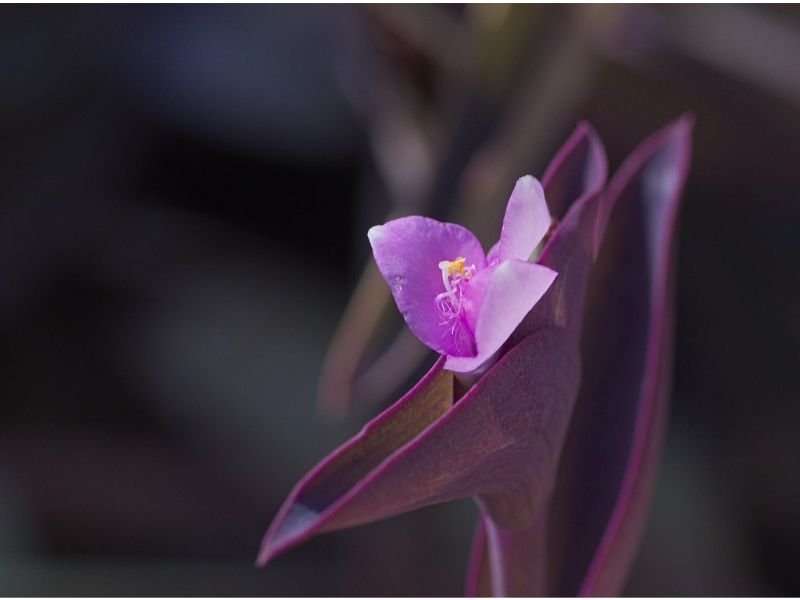
Hardiness Zones: 7 to 11
Approximate Size: 8 to 10 inches (20 to 25 centimeters) tall
Also known as ‘Moses in the Basket’, the purple heart is a child and pet-friendly flowering plant that is tolerant to a broad range of challenges. From drought, heat, and dry soil, to deer, this perennial with purple leaves and showy, 3-petaled tiny blossoms can withstand many obstacles and still thrive.
Inch Plant (Tradescantia zebrina)
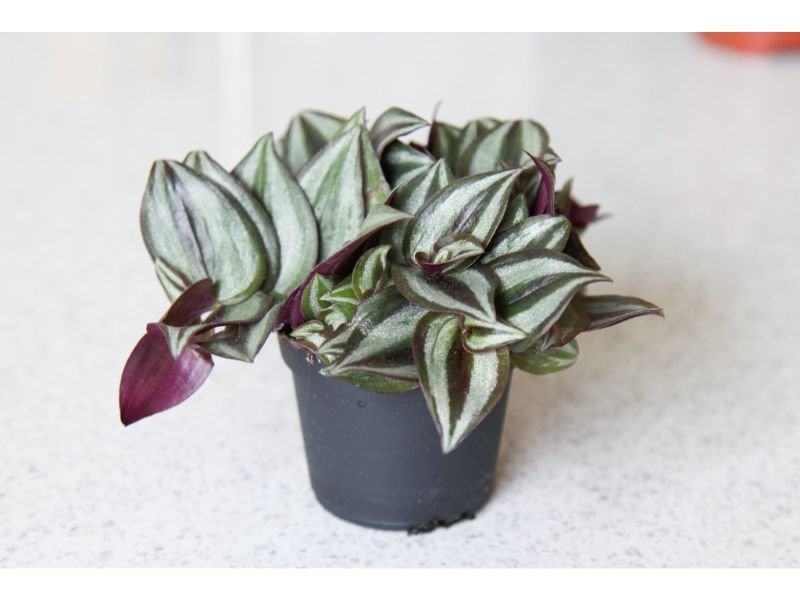
Hardiness Zones: 8 to 12
Approximate Size: 6 inches (15 centimeters) indoors or more outdoors
The dainty inch plant is a close relative to purple heart, as they came from the same genus tradescantia. This native to Guatemala and Mexico is a vining plant that can be used as a ground covering plant or as a striking addition to your hanging basket plants collection. The color pattern of the inch plant, which consists of greenish-purple stripes and silvery-white stripes, could make them easily stand out among any other plants.
Purple Caladium (Colocasia esculenta)

Hardiness Zones: 8 to 11
Approximate Size: 15 to 18 inches (38 to 45 centimeters) tall
Purple caladium or purple taro plant is among the top favored variegated plants among plant enthusiasts for a few reasons. Firstly, their eye-catching heart-shaped or elephant’s ear shaped-foliage makes them a standout addition to both indoor and outdoor gardens. Purple caladium is also relatively low-maintenance and can thrive in both sunny and shady areas, although most of the time, they prefer shady areas over direct sunlight.
Purple Common Houseleek (Sempervivum tectorum)

Hardiness Zones: 3 to 8
Approximate Size: 5 to 12 inches (12 to 30 centimeters) tall
If you’d like to incorporate some perennial succulents for your shady nursery, look no further than the purple common houseleek. Even though rather slow in growth, this native to Southern Europe offers fantastic fleshy rosette-shaped foliage and showy, star-shaped blossoms with shades of pink and yellow hues.
Purple Passion Plant (Gynura aurantiaca)
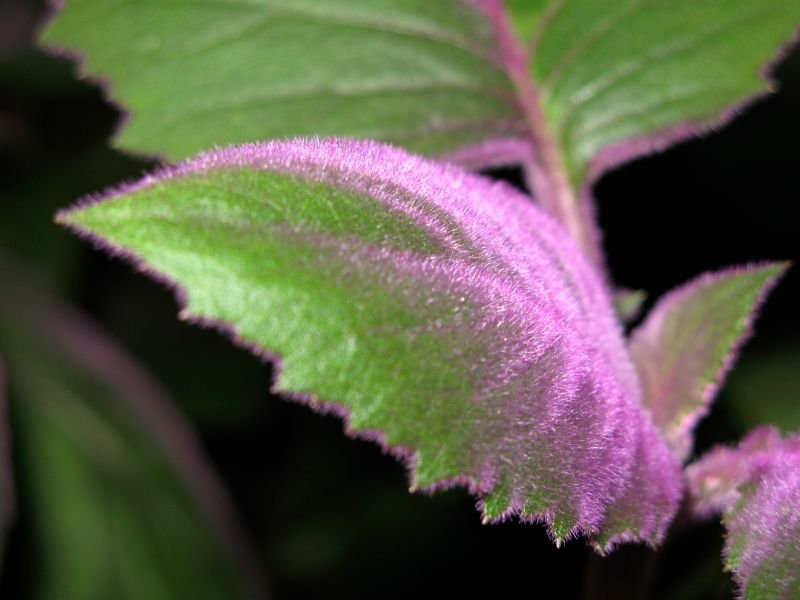
Hardiness Zones: 10 to 12
Approximate Size: 12 to 24 inches (30 to 60 centimeters) tall
This perennial with purple leaves is the ultimate plant for shady areas, as they can’t tolerate direct sunlight exposure. Unlike the purple common houseleek, the purple passion plant is a fast-growing plant that produces ovate-shaped foliage with a unique smooth, velvety texture. They tolerate any kind of soil as long as it has good moisture and a proper drainage system.
How Do You Make the Purple Foliage Stays Purple?
To ensure your chosen perennial with purple leaves maintain its vibrant color, the recipe is pretty easy. The predominant key is to meet all the requirements you need to grow them. Plants are not created the same, so make sure you plant them in the right location and give them an adequate amount of water. Fertilize and prune regularly to promote growth and keep them stay in shape.
Why You Should Thriving Perennials with Purple Foliage
To conclude, thriving perennials with purple leaves could help you provide a pop of vibrant color, creating a visually stunning display. Many of these perennials are also low maintenance and come in a wide variety of sizes and shapes, offering endless possibilities for creative gardening combinations.

New author in the hood. Loves gardening and flowers are my spirit animals (yes I know they are not animals but I insist). I will be covering most of the flowers’ topics here and occasionally random though as well.






